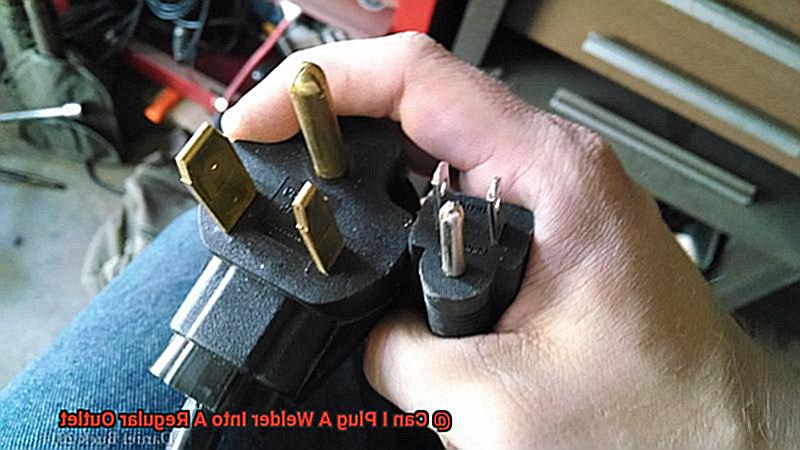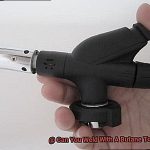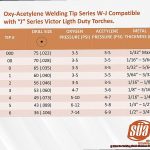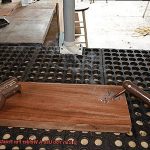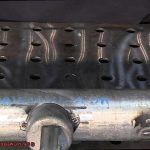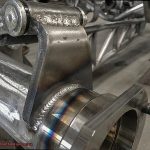Welding is a powerful and rewarding skill that can turn metal into masterpieces. Whether you’re building a custom motorcycle or repairing a rusty gate, welding can help you get the job done. But before you start fusing metal together, you need to make sure your welder has the right power source.
If you’re new to welding, you might be wondering if you can plug your welder into a regular outlet at home. The answer isn’t as simple as yes or no. There are different types of outlets with varying electrical capacities, and choosing the wrong one could lead to disaster.
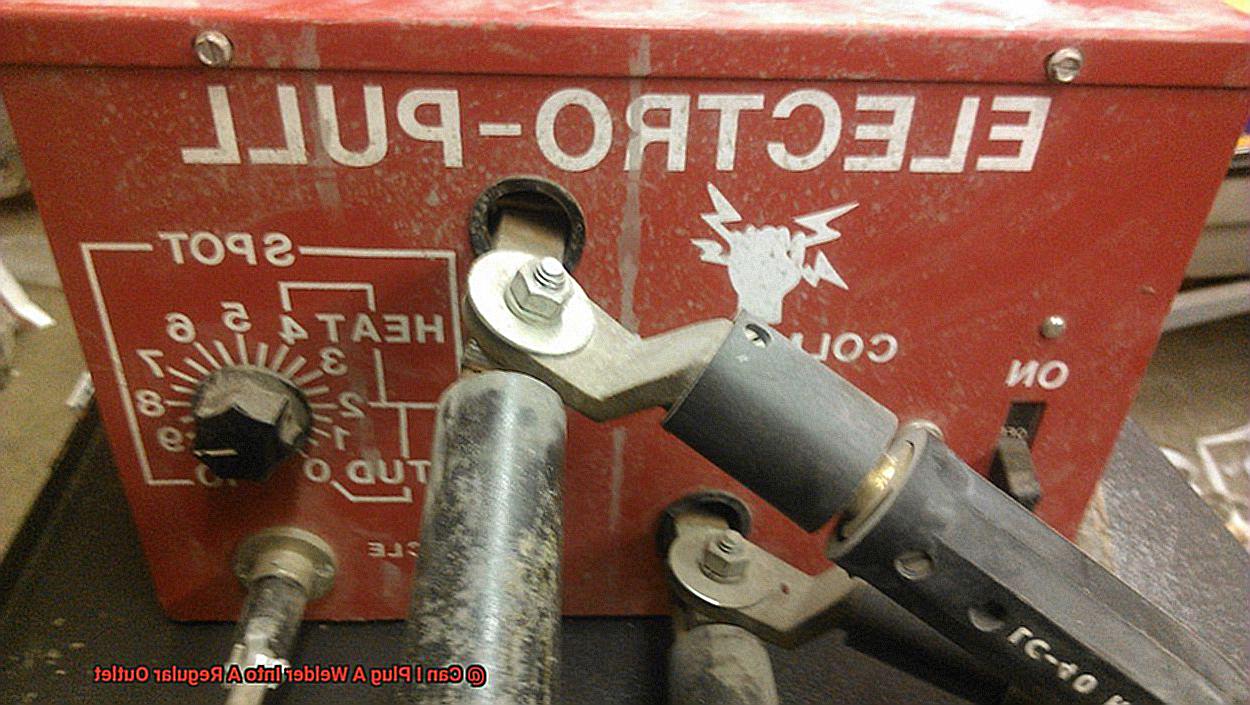
In this blog post, we’ll explore everything you need to know about plugging a welder into a regular outlet. We’ll dive deep into the different types of outlets, their voltage and amperage ratings, and how to determine if your welder is compatible with the outlet in question.
We’ll also discuss why it’s crucial to choose the right extension cords for your welder. Using inadequate wiring or electrical connections can create dangerous situations like electrical shock and fire hazards.
Whether you’re an experienced welder looking for a refresher or someone who wants to learn more about welding power sources, this blog post is for you. So keep reading to discover all there is to know about plugging a welder into a regular outlet.
What Are the Power Requirements of a Welder?
Contents
Welding is a crucial process in metal fabrication, construction, and repair work. But before you start welding, it’s essential to understand the power requirements of your welding machine. In this article, we’ll explore the power requirements of a welder, including voltage, amperage, and duty cycle.
It’s important to note that welding machines require more power than regular household appliances. Most homes have outlets that provide 120 volts of electricity at 15 or 20 amps. However, welding machines require at least 240 volts and 20-50 amps to operate effectively. So, if you’re planning to weld, ensure that your electrical system can provide sufficient power to your welding machine.
The amperage requirement of a welding machine is directly related to the thickness of the metal being welded. The thicker the metal, the more amperage is required to create a strong weld. Therefore, it’s crucial to ensure that your welding machine’s amperage matches the thickness of the metal you intend to weld. Attempting to weld thick metal with a machine that does not have enough amperage can lead to weak and unreliable welds.
In addition to voltage and amperage requirements, it’s vital to consider the duty cycle of your welding machine. The duty cycle refers to the amount of time that a welder can operate continuously without overheating. Welding machines with high duty cycles can operate for longer periods without overheating, making them ideal for larger projects.
While some smaller welders can operate on household circuits, most require higher voltages and amperages than a regular outlet can provide. Attempting to plug a high-powered welder into an outlet that cannot handle its power demands can lead to blown fuses, tripped breakers or even electrical fires. Always ensure that your electrical system can provide sufficient power for your welding machine before plugging it in.
If you want to use your welder on a regular household circuit, consider using an adapter. These adapters can convert your standard 120-volt outlet into a 240-volt outlet, allowing you to use your welder without tripping breakers or blowing fuses. However, it’s essential to note that using an adapter does not increase the amperage of the circuit.
Therefore, you still need to ensure that your welder’s amperage requirements are within the limits of your household circuit.
Can I Plug My Welder Into A Regular Outlet?
The answer to this question depends on the electrical requirements of your specific welder. Let’s dive deeper into what you need to know before plugging in your welding equipment.
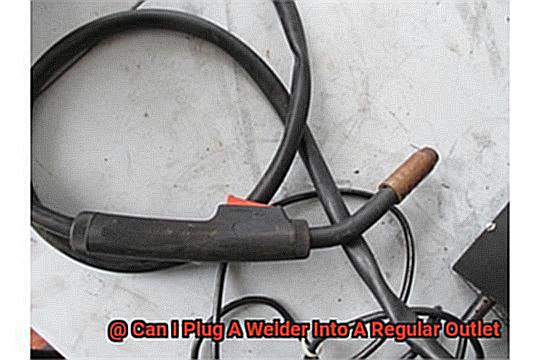
First and foremost, it is crucial to understand the electrical needs of your welder. Most welders require a 220V or 240V outlet with a specific amperage rating. However, smaller welders may only require a standard 120V outlet. Therefore, before you even think of plugging in your welder, make sure that you know its voltage and amperage requirements.
If your welder requires a higher voltage than a standard outlet can provide, then it’s time to call in the experts. You may need to hire an electrician to install a dedicated circuit for your welder. This installation will guarantee that your welder has the proper voltage and amperage to function safely and effectively.
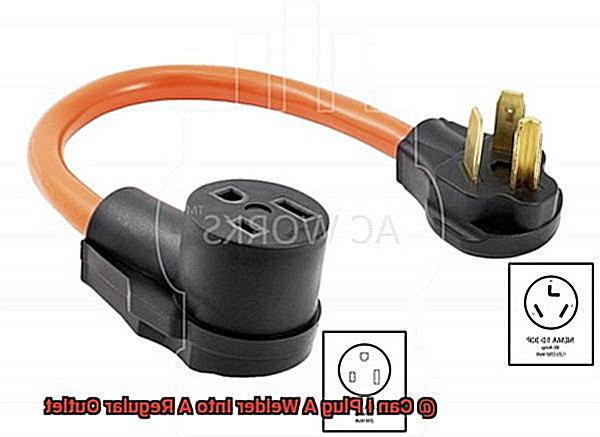
Another crucial factor to consider when plugging in your welder is the length and size of the extension cord you are using. Using an extension cord that is too long or too small in gauge can cause voltage drop, which can make your welder malfunction or even damage it. Always use an extension cord that is rated for the amperage and voltage requirements of your specific welder.
Advantages of Using an Adapter
You know that having the right equipment is essential to getting the job done right. But did you know that using an adapter to plug your welder into a regular outlet can offer some impressive advantages? Let’s dive into the benefits of using an adapter and how it can make your work easier and more cost-effective.
One of the most significant advantages of using an adapter is the flexibility it provides. Instead of being limited to areas with specific outlets, you can bring your adapter and welder with you wherever you need to work. Whether you’re working on a job site or need to move around frequently, using an adapter means you can set up shop quickly and easily.
In addition to flexibility, using an adapter can also save you money on installation costs. If you don’t have the proper outlet for your welder, you may need to hire an electrician to install one for you. This process can be time-consuming and expensive, especially if you need multiple outlets. By contrast, using an adapter simply involves plugging your welder into a regular outlet, making it a much more cost-effective option.
Another benefit of using an adapter is that it allows you to switch between different types of outlets with ease. For example, suppose you have a welder that requires a 220V outlet but need to work in an area with only 110V outlets. In that case, using an adapter enables you to make the connection quickly and efficiently without needing additional equipment or hiring an electrician.
Although there are potential drawbacks to using an adapter, such as reduced power output, the advantages far outweigh the disadvantages. By providing greater flexibility and cost savings while also making it easier to switch between different types of outlets, using an adapter is a useful tool for all welders.
Disadvantages of Using an Adapter
You’re no stranger to the importance of getting the job done right and efficiently. However, using an adapter to plug your welder into a regular outlet may seem like a quick fix, but there are some significant disadvantages to consider.
One of the main drawbacks of using an adapter is a reduction in power output. Adapters typically convert the voltage from the outlet to a lower level, which can result in less power being available for welding. This means that your welds may not be as strong or durable as they could be, and you may end up spending more time on your projects than you need to.
But that’s not all – safety concerns are another major disadvantage of using an adapter. Adapters are not typically designed for continuous use and may not be able to handle the high current required for welding over an extended period of time. This can lead to overheating or even electrical fires if the adapter is not properly rated for the amount of current being drawn. And let’s be honest, no one wants their workspace to go up in flames due to a preventable mistake.
Using an adapter also puts added strain on the electrical system in your home or workspace, which can cause other electrical devices to malfunction or even fail. The last thing you want is for your tools or appliances to break down because you tried to take a shortcut with your welding setup.
Tips for Plugging Your Welder Into a Regular Outlet
Here, we’ll explore five tips to consider when plugging your welder into a regular outlet.
Check the Amperage of the Outlet
The first thing you need to do is check the amperage of the outlet you plan on using. Most household outlets are 15 or 20 amps, which may not be enough to power a welder. If this is the case, you may need to use an adapter or extension cord to connect your welder to a higher amp outlet. Using an outlet with insufficient amperage can damage both your welder and electrical system.
Check the Voltage Compatibility
It’s also essential to ensure that your welder is compatible with the voltage of the outlet you plan on using. Most household outlets are 120 volts, but some welders require 240 volts. Double-checking this information can prevent damage to your welder or electrical system.
Use a Dedicated Circuit for Your Welder
Welders require a lot of power, so sharing a circuit with other electrical devices could lead to tripped breakers or electrical overloads. To ensure that your welder functions correctly and safely, use a dedicated circuit for it. This means that no other electrical devices should be plugged into the same circuit as your welder.
Use Appropriate Extension Cords
If you need to use an extension cord to reach a nearby outlet, make sure it is heavy-duty and rated for outdoor use. Also, ensure that it is long enough to avoid any tripping hazards. Additionally, be sure to use the appropriate wire size and length for your extension cord if you need one. Using a cord that is too short or too thin can cause voltage drops and decreased performance. A wire gauge of at least 12 AWG and a length of no more than 25 feet are recommended.
Invest in a Good Surge Protector
Investing in a good surge protector can protect your welder from any voltage spikes or surges that can damage its electrical components. It’s always better to be safe than sorry when it comes to protecting your equipment.
By following these five tips, you can safely plug your welder into a regular outlet and enjoy your welding projects without any electrical mishaps. Remember to always prioritize safety and take the necessary precautions before using any high-powered electrical equipment.
mF994-16qPg” >
Conclusion
In conclusion, while it is possible to plug a welder into a regular outlet, it’s crucial to take the necessary precautions before doing so. Understanding your welding machine’s voltage and amperage requirements, as well as its duty cycle, is essential for safe and effective operation.
If your welder requires higher voltage than a standard outlet can provide, don’t panic. You may need to hire an electrician to install a dedicated circuit for your welding machine. Alternatively, using an adapter can be a cost-effective solution. However, keep in mind that adapters can reduce power output and pose safety hazards if not used properly.
To ensure that you can plug your welder into a regular outlet safely, follow these five tips: check the amperage and voltage compatibility of the outlet, use a dedicated circuit for your welder, use appropriate extension cords, invest in a good surge protector, and prioritize safety at all times.
By taking these measures and understanding the power requirements of your welding machine beforehand, you can enjoy welding projects without any electrical mishaps.
